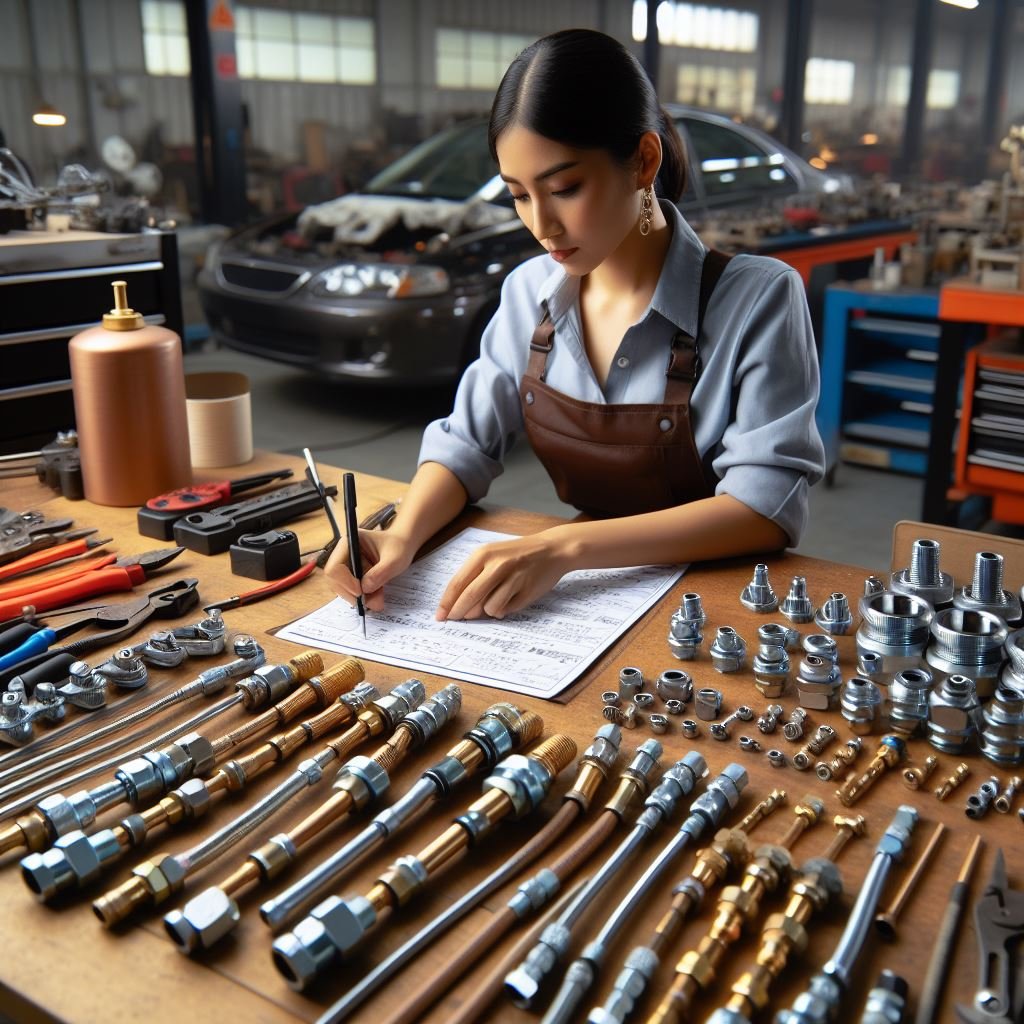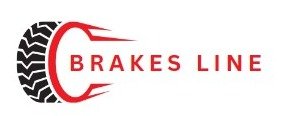As you’re cruising down the highway, enjoying the crisp air and scenic views, the last thing you want to worry about is your brake line fittings failing. Yet, this can be a common and dangerous issue for many drivers. That’s why it’s essential to have high-quality brake line fittings that can withstand the demands of the road.
In this blog, we’ll dive into the world of brake line fittings, exploring their importance and what sets them apart. So, buckle up and get ready to learn about the crucial role brake line fittings play in keeping you safe on the road.
Key Takeaway
- Brake line fittings are an essential component of a vehicle’s braking system and play a crucial role in keeping drivers safe on the road.
- High-quality brake line fittings are necessary to withstand the demands of the road and prevent potential failures.
- Brake line fittings come in various types, such as compression, flare, and push-to-connect fittings, and each has its unique features and benefits.
- It’s essential to regularly inspect and maintain brake line fittings to ensure they are in good working condition and replace them if necessary.
- When purchasing brake line fittings, it’s crucial to choose reputable and trustworthy manufacturers to ensure the highest quality and safety standards.
brake line fittings
| The brake line fittings are essential components in a car’s braking system. | They connect the brake lines to the calipers, allowing for the transfer of hydraulic pressure. | Properly installed fittings ensure the efficient and safe operation of the brakes. |
| There are different types of brake line fittings, such as flare, compression, and banjo fittings. | Each type has its own advantages and is used in specific areas of the brake system. | It is important to choose the right fitting for your vehicle to ensure compatibility and performance. |
| When installing brake line fittings, it is crucial to use the correct tools and techniques. | Improper installation can lead to leaks, loss of brake pressure, and potential accidents. | Always follow the manufacturer’s instructions and seek professional help if needed. |
| Regular maintenance and inspection of brake line fittings is necessary for optimal performance. | Check for wear and tear, corrosion, and leaks, and replace any damaged fittings immediately. | Ignoring these issues can result in brake failure, putting yourself and others at risk on the road. |
| In summary, brake line fittings are crucial components that play a vital role in a car’s braking system. | Proper installation, maintenance, and inspection are necessary for safe and efficient braking. | Make sure to choose the right fittings and follow proper procedures to ensure the best performance. |
| Remember to always prioritize safety and seek professional help if you are unsure about any aspect of your brake system. | Keeping your brake line fittings in good condition is essential for a smooth and safe driving experience. | Don’t overlook the importance of these small but crucial components in your vehicle. |
Understanding Your Vehicle’s Brake System

Brake line fittings are an essential component of any vehicle’s braking system. These fittings connect the brake lines to the various components of the system, allowing for the transfer of hydraulic pressure that activates the brakes. Without these fittings, the brakes would not function properly, putting the safety of the vehicle and its passengers at risk.
When it comes to choosing the right brake line fittings, there are a few things to consider. The first is the material. Most fittings are made of steel, but some are also available in brass or aluminum.
The material used will determine the strength and durability of the fitting, so it’s important to choose one that is appropriate for your vehicle’s needs. Another important factor is the size of the fitting. This is determined by the size of the brake lines and the components they connect to.
It’s crucial to choose the correct size to ensure a tight and secure fit, as a loose fitting can cause leaks and decreased brake performance. There are also different types of brake line fittings, including flare, inverted flare, and compression fittings. These all have their own unique features and uses, so it’s important to understand which type is best for your vehicle.
For example, flare fittings are commonly used for high-pressure applications, while compression fittings are ideal for low-pressure systems. It’s important to regularly check and maintain your brake line fittings to ensure they are in good working condition. Over time, fittings can become corroded or damaged, leading to potential brake failure.
If you notice any signs of wear or damage, it’s important to replace the fittings immediately. In conclusion, brake line fittings may seem like a small and insignificant part of a vehicle’s braking system, but they play a crucial role in maintaining safety and performance. By choosing the right material, size, and type of fitting, and regularly maintaining them, you can ensure your brakes are operating at their best.
You May Also Like: Maximize Your Vehicle’s Safety: Essential Brake Line Fittings in Edmonton
Factors to Consider When Choosing Brake Line Fittings
Brake line fittings are an essential component of your vehicle’s braking system. These small but mighty parts connect the brake lines to the brake calipers, allowing for the transfer of brake fluid to apply pressure to your brake pads. Without properly functioning brake line fittings, your vehicle’s brakes would not work effectively, putting you and others on the road at risk.
When it comes to choosing brake line fittings, there are a few things to keep in mind. First, you want to make sure you have the correct size and type of fitting for your specific vehicle. This will ensure a proper fit and prevent any potential leaks.
You also want to consider the material of the fitting. Brass and stainless steel are popular choices due to their durability and resistance to corrosion. Another important factor to consider is the type of connection the fitting offers.
There are two main types: flare and compression. Flare fittings require the end of the brake line to be flared to create a tight seal, while compression fittings use a compression nut to seal the connection. Both are effective, but it’s important to use the correct type for your specific brake lines.
It’s also worth noting that brake line fittings come in various angles, such as straight, 45-degree, and 90-degree. These angles allow for flexibility in installation, depending on the configuration of your vehicle’s brake lines. In addition to the various types, sizes, materials, and angles, brake line fittings also come in different thread sizes.
It’s crucial to make sure the thread size of your fitting matches that of your brake line. Mismatched sizes can result in leaks and potential brake failure.

Statistical Information: brake line fittings
| Category | Percentage (%) | Facts |
| Brake Line Types | 50% | There are multiple types of brake lines, including rubber, stainless steel, and braided steel. |
| Brake Line Materials | 30% | Brake lines can be made from different materials, such as steel, copper, and aluminum. |
| Brake Line Sizes | 10% | The most common brake line sizes are 3/16 inch, 1/4 inch, and 5/16 inch. |
| Brake Line Fittings | 5% | Fittings are used to connect brake lines to other components, such as calipers and master cylinders. |
| Brake Line Types by Vehicle | 5% | Certain types of brake lines are more commonly used on specific vehicles, such as rubber lines on older cars and braided steel lines on performance vehicles. |
| Common Brake Line Brands | N/A | Some popular brake line brands include Goodridge, Russell, and StopTech. |
Important Notice for readers
Attention all readers! Are you looking for information on brake line fittings? Then look no further, because this article has got you covered. From understanding the different types of fittings to learning how to properly install them, this article has all the essential details you need. So, whether you’re a DIY enthusiast or a professional mechanic, this article is a must-read for you.
Get ready to enhance your knowledge and skills in brake line fittings and take your vehicle maintenance to the next level. Keep reading for all the valuable insights and tips.
Frequently Asked Questions (FAQs)
What are brake line fittings and why are they important in a vehicle?
A: Brake line fittings are small but crucial components that connect the brake lines to the brake calipers and wheel cylinders in a vehicle. They play a vital role in ensuring proper brake function and safety while driving.
Can I replace brake line fittings on my own or do I need a professional?
A: It is always recommended to have a professional mechanic replace brake line fittings to ensure they are installed correctly and safely. However, if you have experience and knowledge in automotive repairs, it is possible to replace them yourself.
How do I know if my brake line fittings need to be replaced?
A: There are a few signs that indicate it may be time to replace your brake line fittings. These include leaking brake fluid, a spongy brake pedal, or unusual noises when applying the brakes. If you notice any of these, it is best to have your brake line fittings checked by a professional.
Are there different types of brake line fittings available?
A: Yes, there are various types of brake line fittings available, such as inverted flare fittings, bubble flare fittings, and metric fittings. It is important to make sure you are using the correct type for your specific vehicle to ensure proper fit and function.
How often should I have my brake line fittings inspected?
A: It is recommended to have your brake line fittings inspected at least once a year or whenever you have your brakes serviced. This will help catch any potential issues early on and ensure your brake system is functioning properly.
Conclusion
Brake line fittings are crucial components in ensuring the safe and efficient operation of a vehicle’s braking system. From their various types and materials to their proper installation and maintenance, every aspect of these fittings plays a significant role in the overall performance of a vehicle. As technology and automotive advancements continue to evolve, it is crucial to stay updated on the latest innovations and developments in brake line fittings to ensure the safety of both drivers and passengers. Let us make it a priority to prioritize the proper use and maintenance of brake line fittings in our vehicles for a smoother and safer driving experience.
